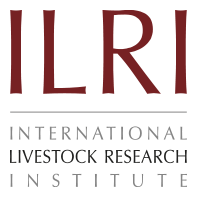Shuwa
Origin and distribution: The Shuwa cattle are also known by the names Arab Shuwa, Arab Choa or Wadera cattle. They are called Arab cattle either with reference to their home country or the traders who introduced them in to the Chad region. They are known to have been brought to the region by the migrant Shuwa Arab nomads. As is evident from their wide distribution, the Shuwa cattle are influenced by the North Sudan Zebu in the East, and by the Fulani in Cameroon. They are found throughout Chad (mainly Ouaddai, Batha and Kanem Districts, except in the southwest), in northeastern Nigeria (Bornu State) and in the extreme north of Cameroon.
Physical characteristics: The breed is considered to have some humpless Shorthorn blood but is phenotypically zebu. Their colour is generally chestnut or dark red-and-black, less frequently reddish brown or black, with or without small white patches on the underline. The head is long, straight in profile, with short, moderately thick, round or flat horns with blunt tips, which commonly curve slightly outwards and upwards or downwards; occasionally the horns project laterally or lie close to the head or are loose. The ears are long but not pendulous, and are carried horizontally with the inner surface to the front. The neck is short, tending to carry the head low. The dewlap is only moderately developed; it shows some folds but is not markedly loose or pendulous. The hump is muscular in structure: small in cows, and of medium size in bulls. It is small but is well muscled, deep built on round ribs. The rump is long and sloping, the tail thin and long. The legs are short and fine-boned, with small, hard, well-formed bones. The range of wither height for males and females is 135-140 cm and 125-128 cm, respectively.
Peculiarity: The breed is owned by semi-nomadic people who move to good grazing lands and water in the dry seasons. Their usefulness under stressful environment is well appreciated; the animals are considered to be good dairy animals, and are used by women for riding and as pack animals.
Breed status: The estimated population of the Shuwa Arab was 4 092 000 in Chad, 50 000 in Cameroon indicating their abundance and not threatened.
Utility: The Shuwa breed is used for work, meat and milk in that order of importance. They are also used for riding, as pack and draft animals. They are considered to be good dairy animals, with milk off-takes of 450-1820 kg in lactations lasting 240-370 days. They give good beef carcasses, although their size is as low as 17.9-18.8 kg at birth, and 250-300 and 350-475 kg at maturity for females and males, respectively.
Related Literature
DAD-IS, 2005: http://dad-is.fao.org/en/home.htm
DAGRIS, 2005: http://dagris.ilri.cgiar.org
Maule J.P. 1990. The cattle of the tropics. Centre for Tropical Veterinary Medicine, University of Edinburgh. Redwood Press Limited, Melksham, Wilts.
Rege J.E.O. 1999. The state of African cattle genetic resources I. Classification framework and identification of threatened and extinct breeds.FAO/UNEP Animal Genetic Resources Information Bulletin. 25:1-25.
Rege J.E.O. and Tawah C.L. 1999. The state of African cattle genetic resources II. Geographical distributions, characteristics and uses of present-day breeds and strains. FAO/UNEP Animal Genetic Resources Information Bulletin. 26:1-26.
Related websites
http://www.odi.org.uk/publications/wp122pdf/
chap3and4.pdf






